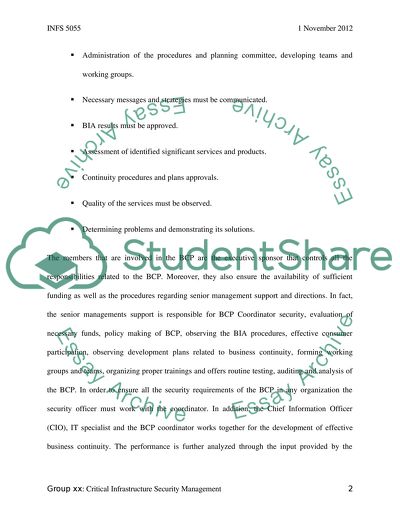Cite this document
(“Establishing a Business Continuity Plan Essay Example | Topics and Well Written Essays - 1750 words”, n.d.)
Retrieved from https://studentshare.org/information-technology/1606686-information-security-management-within-a-critical-infrastructure
Retrieved from https://studentshare.org/information-technology/1606686-information-security-management-within-a-critical-infrastructure
(Establishing a Business Continuity Plan Essay Example | Topics and Well Written Essays - 1750 Words)
https://studentshare.org/information-technology/1606686-information-security-management-within-a-critical-infrastructure.
https://studentshare.org/information-technology/1606686-information-security-management-within-a-critical-infrastructure.
“Establishing a Business Continuity Plan Essay Example | Topics and Well Written Essays - 1750 Words”, n.d. https://studentshare.org/information-technology/1606686-information-security-management-within-a-critical-infrastructure.


